| Revista Umělec 2006/1 >> Ideology of modernism | Lista de todas las ediciones | ||||||||||||
|
|||||||||||||
Ideology of modernismRevista Umělec 2006/101.01.2006 Jiří Skála | Entrevista | en cs |
|||||||||||||
|
Interview with Jiří Skála and Aleksander Komarov.
Jiří Skála is a Czech artist. Aleksander Komarov comes from Belarus, is an artist as well and lives in Rotterdam. They met in Vienna and later in Prague, when Komarov took part in the biennale at the Prague National Gallery. Reaching for a voice with cosmopolitan erudition, Skála inquired about actuality, modernism, ideology of architecture, free movement and the perspective of the Belarusian, a man who is in all places considered a temporary visitor only. Aleksander, what work do you display at the Biennale at the Veletržní Palace? It’s an installation called Last House 89 to 68. These numbers are indeed significant. 1968 was a year of global resistance movements. Most notably, the “Prague Spring”, when the Soviet Army violently suppressed the Czech opposition movement. Not to mention throughout America and Europein that same year was the growth of the flower-generation’s great protests against the war in Vietnam. When the Berlin Wall came down in 1989, that was the beginning of the end for the Soviet Union. In the 20th century we witnessed many different ideologies coming to an end, or being replaced by new ones. From my Belarusian perspective, after 1989 there was a new wave of nationalism, but after a few years, not really being accustomed to real independence, these articulations disappeared again. So an authoritarian regime was established--Belarus is now a museum of the Soviet Union with everything preserved including its own KGB. There are some buildings, like the Palac Republiky, which can be called protagonists of this political theater. Its construction began during the Soviet Era in the 1970s but was completed only recently, in the 1990s. This building moved from one ideological regime to another. I traveled in search of something comparable to the Palac Republiky in Minsk and I found the ‘Volkspalast’ in Berlin. Are these two numbers only symbols? It is about perspective; you can read these numbers upside down. 89 can become 68 and vice versa. With regards to modernism and the ideology of modernism at this time, as the Berlin Wall came down, some argue that modernism died too. For people from the West and Central Europe the idea of modernism is gone. A friend of mine told me about the Museum of Communism in Vietnam and how they were attempting to give their rendition of modernism from a communist angle. It’s funny, the exhibition started with works of Picasso. In Belarus, modernism starts and ends with Cezanne. Modernism is still present as a contemporary art, not like retro. When you see the monuments like those in Belarus and in Berlin, one is reminded of how modernism was taught in primary and secondary school. This big ideology is saying that you can do everything you want but only if you possess the power to do it—which was often the missing factor. We are in a democracy now. Modernism is over. But artists always want to be aggressive, active, conspicuous, hence the idea of modernism is interesting for them now. It’s a historical moment. All the different ideologies are unified in one, but how this big philosophy stayed intact after the fall of the Berlin Wall is anyone’s guess. I don’t have a clear idea what Modernism should be today. This ideology of modernism is interesting, artists feel it is a part of their history, but they don’t know how to read it, how to describe it, or what its significance is. Modernism was disappearing very slowly. In retrospect, I was born in the time of communism, although I don’t feel as though I grew up in an era of Modernism. It was already done. Status quo. Tell me about your other work in the Biennale. Could you describe the Passport Project? The title of the passport project is 35 grams. That’s the actual weight of my passport. Just before I had to renew my passport, it occurred to me that it would be an interesting project to document all these stamps and visas from my travels. So I made some copies of it. It was in line with the notion of the passport belonging to the individual as well as belonging to the state. In making copies of my passport, I was multiplying it. Once the Belarusian passport is out of date, it becomes a useless document for the state. From a personal perspective, it communicates the superficial identity of what it means to be a Belarusian citizen. That’s why I weighed it. 35 grams seemed rather heavy seeing as I was just a local Belarusian. After I started traveling, I became conscious of being out of Belarus. No matter where I am, I am recognized by my Belarusian passport. Everywhere I live outside Belarus I am regarded as a temporary citizen. Do you feel free in or out of Belarus? It depends on where one draws the line of freedom. In my temporary status, it is about visas. The strange demarcation of borders somehow travels with you. To print my passport as a book was commenting on the issue of identity from my perspective. I chose to format a white book with a white cover, relating to the white space in an abstract way. I copied the whole passport into the book. It’s weight is, of course, more than 35 grams because included in the project was an essay written by my friend Nelly Bekus, a journalist from Belarus. Do you need a visa to go to Russia? No, not to go to Russia. But Belarusians need a visa to go anywhere, except Cuba and Iraq. Do you think that Belarusian politicians have a strong relationship with the Kremlin? Yes. Russia has a big influence on Belarus’ politics. It is our “big brother”. What is happening is Belarus is acceptable for both the Russians as well as the Europeans. We act as a buffer zone between two political visions. Status quo. People themselves have to decide now which one they will choose. But I don’t think that will happen in the short term, maybe in a few years, yes, or “He” will die or... ...Or “He” will live forever. Hopefully in the future, something will change. You made the model of the palace in Minsk. By altering the scale so that it appears much higher than normal, it resembles a skyscraper. Trump wants to build a new Twin Tower in New York. Do you feel that that has some relationship with your piece? It is a very ironic piece. The image of the skyscraper is related to the image that the Soviet citizen got from America: the skyscrapers representing capitalism. My manipulation of a photographic document of the Palac Republiky speaks about how a capitalist economy can grow regardless of location. Thus, capitalism can be applicable even to a place with a Soviet tradition, like Russia and China now. I think that in Europe power is represented differently. The buildings of nationalism built in the 20s and 30s are not so high but they are big and covered in marble. Though I have yet to go to New York, I understand the irony. Perhaps there are skyscrapers made of marble in Manhattan, I don’t know. Yes, there is a lot of marble. It is also interesting that many people didn’t notice that my photograph had been manipulated. The people in Europe have a set assumed image of Belarus. Since there are so many rumors, assumptions and fantasies about this country, even blatant fiction is taken as reality and truth. Why did you move from Minsk to Rotterdam? My study brought me from Minsk to Poland, and then later to Holland. I was attracted by the new architecture in Rotterdam. The high-rise buildings there surprised me because I had previously lived in Amsterdam. I used to live in quaint, small cities before, and then suddenly there was Rotterdam. It’s not as metropolitan as New York but its huge multicultural community leads itself to also have a large and incredibly international art scene. I did not see this way of living back in my country and so it was very easy for me to adapt and live like I wanted to in Rotterdam. It’s already been five years now. When you speak about nationalist buildings, I remember that in Warsaw there is a very big one. This building, the palace of culture, is one of seven skyscrapers presented to Warsaw as a gift during the Stalinist Era of the Soviet Union. Of course, every major city has got to have their own big tower. Look at Prague, Berlin… This has to do with the representation of power. I guess it also depends on the price of the land. Land in South Manhattan is very expensive so one would see a lot of corporations investing in that area. If you look at the tall skyscrapers that the Chinese architects are now building in Shanghai, this pattern of corporations building skyscrapers seems almost inevitable, natural even. Were they copying this trend? In Shanghai they go far beyond copying! In Pu Dong, which is the newest location in Shanghai to build skyscrapers in, they have constructed some futuristic buildings so extreme in nature that American directors go there to film science fiction films. In China and Europe the issue of economics holds more gravity than that of politics. The fast rising economy in China preoccupies much of the people’s minds. Business becomes the first ideology of the people while the politicians scramble to dress the window with some sort of communist decoration. Last question: What do you think about the idea of art? Why do you do it? Art is a language for me. With art, I can express various issues in an abstract way without it having to be useful or comprehensive. Art is not about realization, it is ultimately about expression.
01.01.2006
Artículos recomendados
|
|||||||||||||
|
04.02.2020 10:17
Letošní 50. ročník Art Basel přilákal celkem 93 000 návštěvníků a sběratelů z 80 zemí světa. 290 prémiových galerií představilo umělecká díla od počátku 20. století až po současnost. Hlavní sektor přehlídky, tradičně v prvním patře výstavního prostoru, představil 232 předních galerií z celého světa nabízející umění nejvyšší kvality. Veletrh ukázal vzestupný trend prodeje prostřednictvím galerií jak soukromým sbírkám, tak i institucím. Kromě hlavního veletrhu stály za návštěvu i ty přidružené: Volta, Liste a Photo Basel, k tomu doprovodné programy a výstavy v místních institucích, které kvalitou daleko přesahují hranice města tj. Kunsthalle Basel, Kunstmuseum, Tinguely muzeum nebo Fondation Beyeler.
|







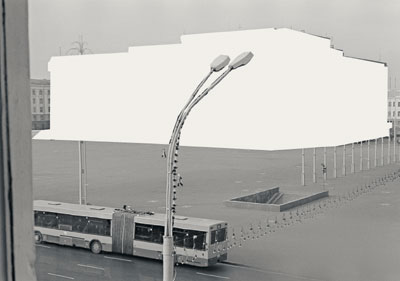















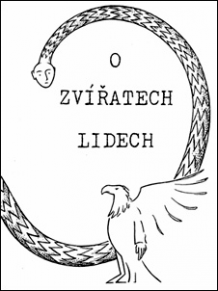




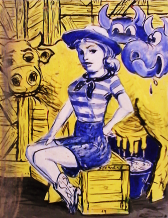
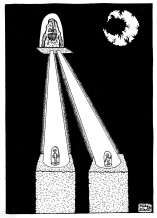
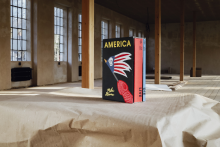
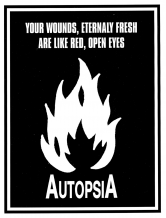


 We Are Rising National Gallery For You! Go to Kyjov by Krásná Lípa no.37.
We Are Rising National Gallery For You! Go to Kyjov by Krásná Lípa no.37.
Comentarios
Actualmente no hay comentariosAgregar nuevo comentario